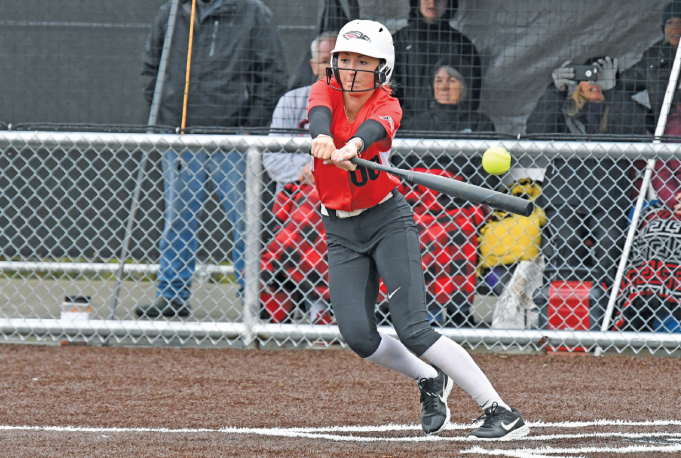The photo above provides an interesting conundrum for umpires. While it is just a snapshot, it leads to some intriguing questions and forces us to get into the rules. At the end of the day, the issue remains the same — what do we have on this play?
To settle the matter, we need to look at both definitions and rules for batting in order to figure out exactly what we have. While at first glance it appears the batter is slapping at the ball, is it really that easy? If you are the base umpire on this game and the plate umpire comes to you for help, what will be your response?
Let’s first take the feet out of the equation. That is a different article for a different day. Let’s instead focus solely on the bat. The first determination we need to make is whether or not this is a bunt attempt. All four major codes define a bunt in relatively the same terms. A bunt is a legally batted ball not swung at but tapped or intentionally tapped into the infield with the bat. The bat is held in the path of the ball and tapped slowly as opposed to a full swing. In the picture above, the batter would need to hold the bat out, leave it and simply run forward and tap the ball at the last minute to even possibly be considered a bunt or drag bunt. Since both hands are down around the knob of the bat, it is more than likely that isn’t the case in this scenario.
If you deem this is a bunt, you must determine if she attempted to bunt or not. In USA Softball, the batter can leave the bat over the plate on a bunt attempt, provided she doesn’t move the bat toward the ball, and not have a strike called if the ball is out of the zone. In all other codes, the batter must pull the bat back in order to not have a strike called. Determining if this is a bunt attempt or not is extremely important with two strikes, because if the batter happens to foul the ball off, she would be out if this is deemed a bunt attempt.
If you determine this isn’t a bunt attempt, the next logical step is to deem it a slap. A slap is a batted ball that has been struck with a short, chopping motion or modified swing as opposed to a full swing. Batters will either set up in a bunting stance and then pull back and slap at the ball or more commonly, as in the picture above, run up toward the pitcher and swing. If the batter happens to contact the ball and fouls it off, it is treated as any other foul ball and not a bunt. Often it is incorrectly referred to as a slap bunt, which is a misnomer.
If you consider this a slap, you must determine whether this is a checked swing or a swing. While difficult to determine from a still photo, there are things umpires must consider to determine if a swing happened. The first is to ascertain if the batter attempts to hit the pitch. Second, we can look at the barrel and see if it is in front of the body or out in front of the front hip (NCAA). Other determinations include: Does the batter roll her wrists, and does she swing through the ball and bring the bat back or does she draw the bat back before the pitch arrives?
There have been instances in games when a pitcher throws a change-up and the batter checks her swing (or swings), pulls back and swings again. If you rule that first attempt was a swing, the second swing does not count. If the batter makes contact on the second attempt, it would be a dead ball and all action from that swing is canceled.
This is why it is extremely important as a base umpire to always look into the plate and make a determination on every swing or checked swing. While the plate umpire may not come to you on every attempt, this situation could blow up on you if you aren’t prepared. In this instance, a simple, “Swing?” request from the plate umpire may not be enough to properly rule on the play and all umpires may need to come together to get the call right.
Know the differences between a bunt, slap and swing and make sure to use rulebook language when discussing the situation with a coach. Chances are at least one coach is going to come out and ask what you have in a situation like this where a swing is anything but routine. Using proper language and staying calm will help not only inform the coach of the ruling but can also keep you and your crew out of any further trouble.
Brad Tittrington is an associate editor for Referee. He is a collegiate and USA Softball umpire. He also officiates women’s college and high school basketball as well as high school volleyball.
What's Your Call? Leave a Comment:
Note: This article is archival in nature. Rules, interpretations, mechanics, philosophies and other information may or may not be correct for the current year.
This article is the copyright of ©Referee Enterprises, Inc., and may not be republished in whole or in part online, in print or in any capacity without expressed written permission from Referee. The article is made available for educational use by individuals.


















